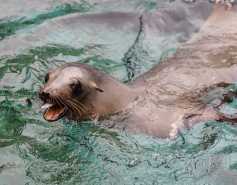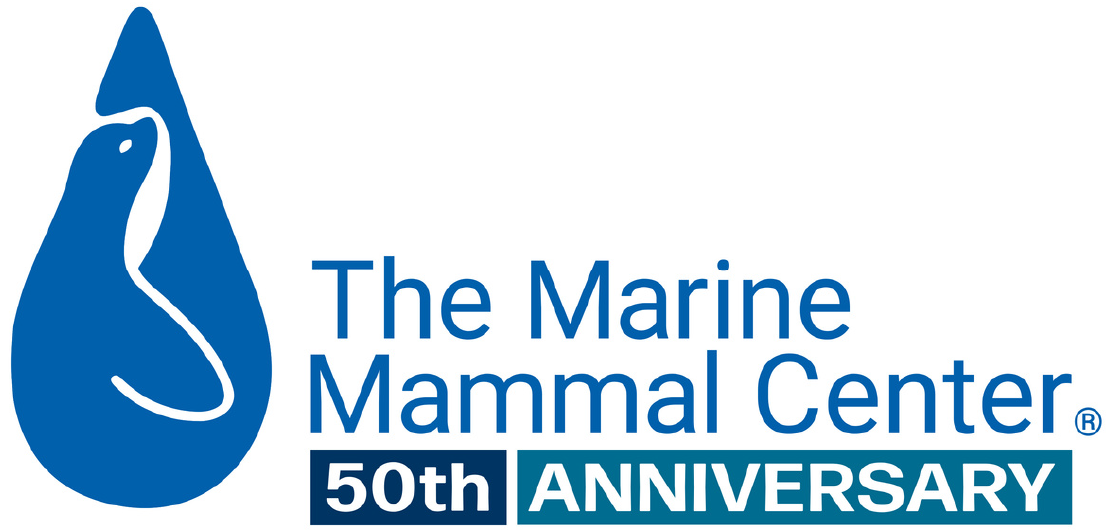
Investigation of the Use of Serum Biomarkers for the Detection of Cardiac Disease in Marine Mammals
- Diagnostics
Abstract
Cardiac disease has been extensively documented in marine mammals; however, it remains difficult to diagnose antemortem. Assays measuring cardiac troponin I (cTnI) and N-terminal pro-brain natriuretic peptide (NT-proBNP) are used as sensitive and specific biomarkers of cardiac disease in many species, but have not been widely investigated in marine mammals. This study aimed to provide a set of reference values for cTnI and NT-proBNP in belugas (BW) (Delphinapterus leucas), sea otters (SO) (Enhydra lutris), Steller sea lions (SSL) (Eumetopias jubatus), and California sea lions (CSL) (Zalophus californianus) with and without cardiac disease, and to determine if these biomarkers are useful indicators of cardiac disease in these species. First, existing immunoassays for cTnI and NT-proBNP were successfully validated utilizing species-specific heart lysate spiked serum. Cohorts were defined by histopathology as animals with no evidence of cardiac disease (“control”), with confirmed cardiac disease (“disease”), and with concurrent renal and cardiac disease (“renal”) for which serum samples were then analyzed. Serum concentration ranges for cTnI (ng/ml) and NT-proBNP (pmol/L) were determined for control and disease cohorts. There was significantly higher cTnI (P= 0.003) and NT-proBNP (P= 0.004) concentrations in the CSL disease cohort, as well as positive trends in BW, SO, and SSL disease cohorts that did not reach statistical significance. NT-proBNP concentrations were significantly higher in the CSL renal cohort compared with the control (P < 0.001) and disease (P= 0.007) cohorts. These results suggest that cTnI and NT-proBNP may be clinically useful in the antemortem diagnosis of cardiac disease in CSL, and warrant further investigation in BW, SO, and SL.
Joblon, M.J., Flower, J.E., Thompson, L.A., Biddle, K.E., Burt, D.A., Zabka, T.S., Adkesson, M.J., Halaska, B., Goertz, C.E., Rouse, N. and Cahoon, S.N., 2022. Investigation of the use of serum biomarkers for the detection of cardiac disease in marine mammals. Journal of Zoo and Wildlife Medicine, 53(2), pp.373-382.
Related Publications
{"image":"\/Animals\/Patients\/California sea lions\/csl-by-bill-hunnewell-c-the-marine-mammal-center-1.jpg","alt":"California sea lion eating a fish","title":"New Technique for Diagnosing Lung Parasite Infections in Sea Lions","link_url":"https:\/\/www.marinemammalcenter.org\/publications\/new-technique-for-diagnosing-lung-parasite-infections-in-sea-lions","label":"Research Paper"}

{"image":"\/Animals\/Patients\/Elephant seals\/cropped-images\/es-by-bill-hunnewell-c-the-marine-mammal-center-3-2-1214-3454-3512-1600891002.jpg","alt":"northern elephant seal","title":"Diagnostic Tests for Lungworm-Infected Northern Elephant Seals","link_url":"https:\/\/www.marinemammalcenter.org\/publications\/diagnostic-tests-for-lungworm-infected-northern-elephant-seals","label":"Research Paper"}

{"image":"\/People\/Action\/Veterinary care\/cropped-images\/cara-field-fur-seal-exam-by-bill-hunnewell-c-the-marine-mammal-center-0-0-1245-1000-1601838274.jpg","alt":"Dr. Cara Field takes blood from a fur seal","title":"Evaluating Diagnostic Tools for White Blood Cell Counts in Pinnipeds","link_url":"https:\/\/www.marinemammalcenter.org\/publications\/evaluating-diagnostic-tools-for-white-blood-cell-counts-in-pinnipeds","label":"Research Paper"}

{"image":"\/Animals\/Wild\/Other species\/cropped-images\/fin-whale-fort-funston-by-barbie-halaska-c-the-marine-mammal-center-259-328-3782-2954-1619455378.jpg","alt":"","title":"Analyzing Stress and Reproductive Steroid Hormones in Gray and Fin Whales","link_url":"https:\/\/www.marinemammalcenter.org\/publications\/analyzing-stress-and-reproductive-steroid-hormones-in-gray-and-fin-whales","label":"Research Paper"}

Recent News
{"image":"\/Animals\/Patients\/Hawaiian monk seals\/2025\/cropped-images\/d-ru28release-exam-at-ke-kai-ola111025photo-by-giancarlo-rulli-c-the-marine-mammal-center-noaa-permit-24359-0-0-1270-992-1764620886.jpg","alt":"","title":"Bird Flu Vaccine Trial Offers Hope for Protecting Hawaiian Monk Seals","link_url":"https:\/\/www.marinemammalcenter.org\/news\/bird-flu-vaccine-trial-may-offer-hope-for-protecting-hawaiian-monk-seals","label":"News Update","date":"2025-12-01 08:13:00"}

Bird Flu Vaccine Trial Offers Hope for Protecting Hawaiian Monk Seals
December 1, 2025
Read More{"image":"\/Animals\/Patients\/Hawaiian monk seals\/2021\/hms-pp08-by-sheila-latta-c-the-marine-mammal-center-noaa-permit-18786.jpg","alt":"Hawaiian monk seal","title":"The New York Times: Inside the Bird-Flu Vaccine Trial for Monk Seals","link_url":"https:\/\/www.marinemammalcenter.org\/news\/the-new-york-times-inside-the-bird-flu-vaccine-trial-for-monk-seals","label":"In the News","date":"2025-12-01 01:00:00"}

The New York Times: Inside the Bird-Flu Vaccine Trial for Monk Seals
December 1, 2025
Read More{"image":"\/Animals\/Wild\/Sea otter\/so-wild-morro-bayphoto-c-brian-simuro-20.jpeg","alt":"Sea otter and pup","title":"Watch a Sea Otter Pup Reunite With Its Mother","link_url":"https:\/\/www.marinemammalcenter.org\/news\/watch-sea-otter-pup-reunite-with-its-mother","label":"News Update","date":"2025-11-14 10:35:41"}

{"image":"\/Animals\/Wild\/Sea otter\/sea-otter-photo-c-brian-simuro.jpeg","alt":"Sea otter","title":"AP News: Baby sea otter is reunited with mother in central California after dramatic rescue","link_url":"https:\/\/www.marinemammalcenter.org\/news\/ap-news-baby-sea-otter-is-reunited-with-mother-in-central-california-after-dramatic-rescue","label":"In the News","date":"2025-11-14 09:46:34"}

AP News: Baby sea otter is reunited with mother in central California after dramatic rescue
November 14, 2025
Read More